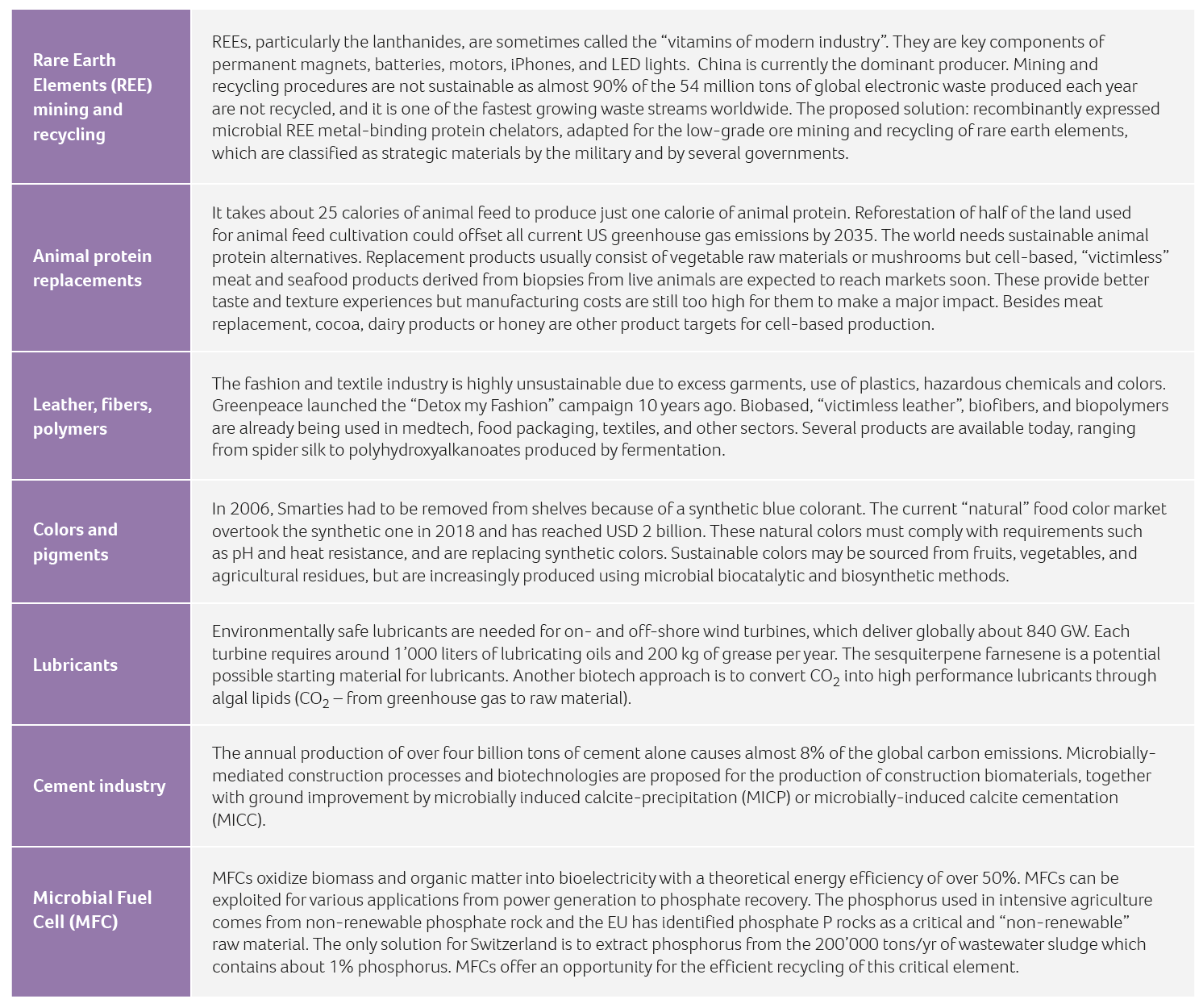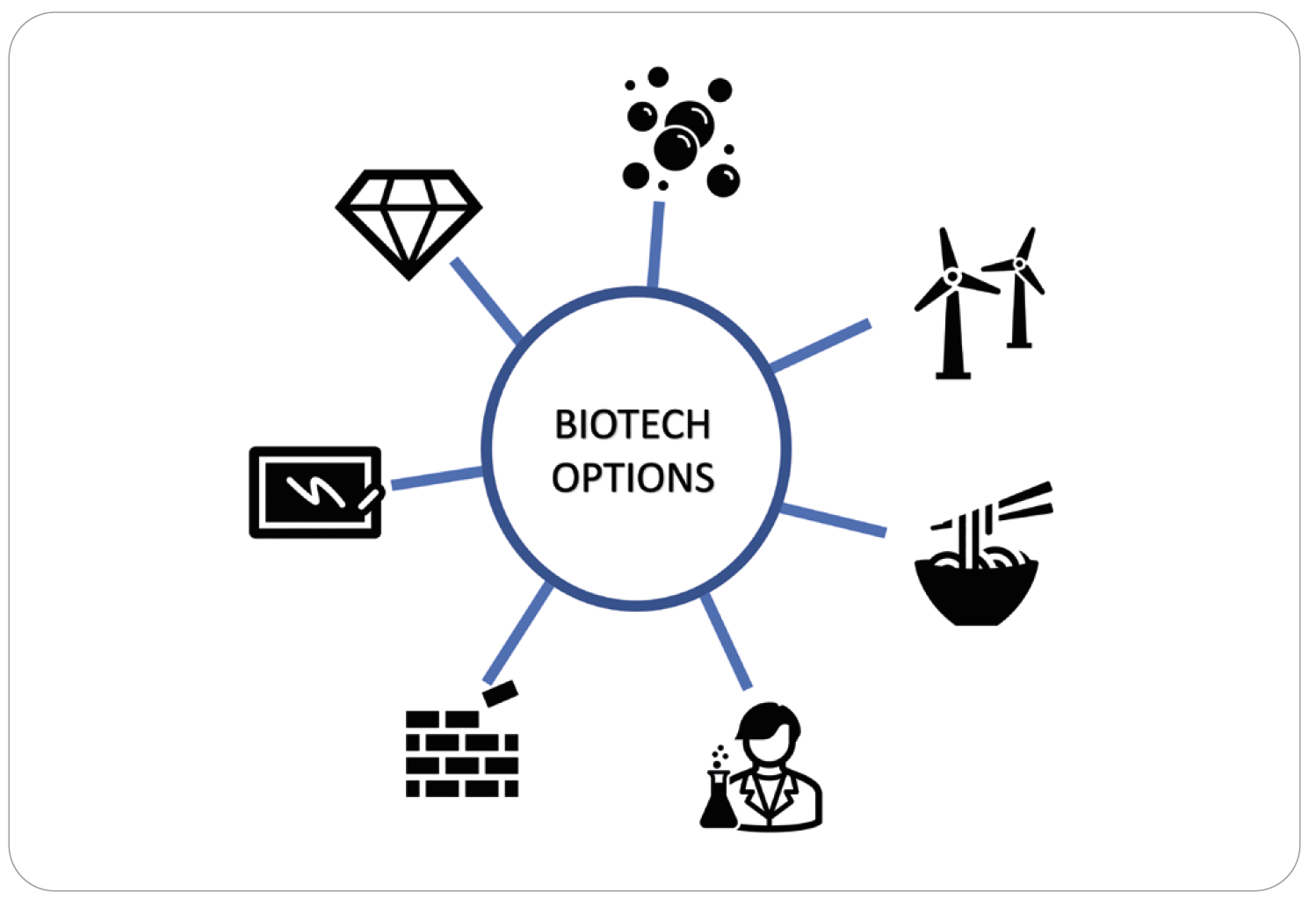- Get directions
- Leave a review
- Claim listing
- Bookmark
- Share
- Report
- prev
- next
- Tuesday, April 25, 2023 @ 7:00 am
The intrinsic advantages of biotechnology are indisputable. The combination of exponential growth and the precision of biochemical reactions offers the promise of truly sustainable production.

Hans-Peter Meyer
Swiss Academy of Engineering Sciences SATW | Head, Working Group Biotechnology
The fastest growing bacteria, weighing ~ 10-12 g per cell, grow so rapidly that their biomass could theoretically reach the mass of the earth (9*1054 tons) in less than a week. The ability to harness the growth potential of microorganisms to achieve sustainable production processes is currently most apparent in the pharmaceutical industry, where complex and mostly chiral molecules produced with chemo-, regio- and stereoselective biotechnology tools are vital ingredients of novel drugs and vaccines.
How the pharma sector is unlocking the potential of biotech
Global sales generated by the biotechnology sector have roughly doubled over the last ten years, to around USD 500 billion. Approximately half of these global sales are related to healthcare applications, and in Switzerland the share is much higher. Monoclonal antibodies are of particular importance for the Swiss pharma industry (see Swiss National Science Foundation article, p16), and other key sectors are increasingly exploiting the potential benefits of biotechnology. This new approach has been driven by many factors, including consumer demand for green chemicals, changing environmental policies, price per ton of CO2, and dwindling natural raw materials.
The Swiss Biotech Report 2021 article ‘Organic Chemistry at the Crossroads’ outlined the potential applications and benefits of industrial biotechnology and concluded that the organic chemical industry must reinvent itself, as the increasing structural, chiral and functional complexity of life science products is pushing organic chemical synthesis to its limits. As a consequence, two other important branches of the Swiss economy, the flavor & fragrance and agrotech industries, added biocatalysis and biosynthesis to their predominantly mature chemical toolbox some time ago (see scienceindustries article, p30).
Applications far beyond pharmaceuticals and fine chemicals
With the transition from fossil sources and the need to make sustainability a priority in all our activities, biotechnology must be regarded as a vital manufacturing tool and preferred option in sectors far beyond the small molecule pharma products, fine chemicals, vitamins, and agrochemicals. Table 1 shows selected examples of technologies in which the combination of exponential growth and specificity of biotech systems is already being successfully exploited. These are key areas for the application of Swiss innovation, as part of international collaborations to unlock the advantages of industrial biotechnology and develop effective solutions to global challenges.

Two examples included in the table are related to inorganic chemistry. The “Periodic Table of Endangered Elements” published by the American Chemical Society (https://www.acs.org) in 2017 lists no fewer than 44 elements which face supply limitations in the coming years. Rare earth elements and phosphorus are two examples where specificity of biological systems can be used for the mining or recycling of these critical elements.
This list is anything but exhaustive and it shows how diverse the required processes, operations and biological systems can be. The biotechnological production of large parenteral proteins (red biotechnology) is technically and economically welldefined and the sector is very well organized through the Swiss Biotech Association. Industrial biotechnology, on the other hand, serves a multitude of different markets, using a range of disparate manufacturing methods. Moreover, the industrial biotechnology sector is not yet organized in Switzerland because of differing interests and economic drivers.

The need for international collaboration
Most players described in this article use microbiology, genetic engineering and bioprocessing for value generation but are active in very different markets and, as a consequence, are not direct competitors. This facilitates free exchange of ideas, and knowledge could be pooled, shared, exchanged and exploited in a regulated manner. An example of this approach is the collaboration between Novartis AG and Syngenta AG, two companies exploiting two entirely different markets, that started a very successful joint project in 2017 with the ZHAW Life Sciences and Facility Management to tackle the challenge of halogenase mediated late-stage catalysis.
To achieve continued success in a highly competitive market requires continuous innovation, not only in the laboratory or in the manufacturing plant, but also in the way we work together.
The use of blockchain technology can ensure security and facilitate cooperation in areas which may previously have been seen as potentially conflicting, but which may offer tremendous opportunities through decentralized and controlled peer-to-peer exchange. Such an approach is currently being investigated by the Swiss Industrial Biocatalysis Consortium (SIBC).
There is huge potential for the further development of an active industrial biotech cluster in Switzerland, and the Swiss Biotech Association and the Swiss Academy of Engineering Sciences (SATW) have continued their efforts to bring an Industrial Biotechnology working group into being. A knowledge exchange platform has been created and embedded into the swissbiotech. org website aimed at connecting key players and fostering the formation of an industrial biotech community.